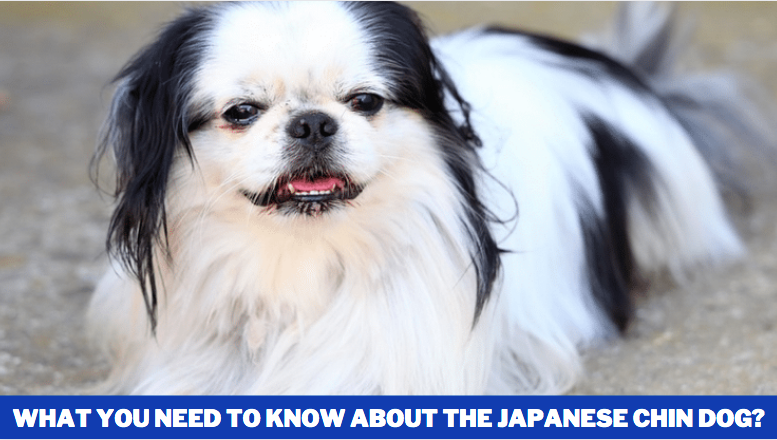What you need to know about the Japanese Chin dog breed and its personality traits
Those who are familiar with the Japanese chin believe it is the perfect pet because of its combination of intelligence, sensitivity, responsiveness, and affection. It’s both elegant and amusing, and it flourishes in any setting.
As a result of this crossbreeding, the Japanese chin and the King Charles spaniel share many characteristics.
Size:
Weight Range:
Male: 4-12 lbs.
Female: 4-12 lbs.
Height at Withers:
Male: 10
Female: 9
Features:
Brachycephalic (squashed face), floppy ears (naturally)
Expectations:
Exercise Requirements: 20 minutes/day
Energy Level: Average
Longevity Range: 12-14 yrs.
Tendency to Drool: Low Tendency to Snore: High
Tendency to Bark: Low
Tendency to Dig: Low Social/Attention Needs: High
Bred For: Lapdog
Dog Coat:
Length: Medium
Characteristics: Straight
Colours: Red and white, black and white with tan points
Overall Grooming Needs: Moderate
Dog Recognition:
AKC Classification: Toy
UKC Classification: Companion Dog
Prevalence: So-so
The Japanese chin is distinguished by its bright and intellectual appearance, as well as its peculiar Oriental expression.
These dogs have a large, broad head, huge, wide-set eyes, a short, broad mouth, ear feathering, and facial markings that are evenly spaced and patterned.
The weight and height of this toy breed vary from four to eleven pounds and nine to ten inches, respectively.
The chin is either black and white, red and white, or black and white with tan points depending on the colour scheme. The phrase “tan points” refers to tan or red dots that appear over each eye, inside the ears, on both cheeks, and at the anal vent area if any black is present.
Japanese chin dog colours such as red, orange, lemon, and sable are included in the phrase red, which includes all shades of the aforementioned colours that have been combined or overlaid with black.
It is speculated that British breeders may have crossed the chin with the King Charles spaniel, which would explain the striking resemblance in their looks.
Japanese chin dog Personality:
A Japanese chin makes an excellent companion. He is a sympathetic and intelligent dog, albeit he is a little independent, whose sole objective in life is to be a friend for his owner. When it comes to those he knows and loves, he is responsive and affectionate; nevertheless, when it comes to strangers or new situations, he is reticent. With its naturally immaculate coat, the feisty chin is an excellent pet that can adapt to any environment and thrive.
Having to care for a Japanese chin dog:
Those who are familiar with this breed will never be able to live without one again. Japanese chins are the epitome of everything that is desirable in a companion animal. They are exquisite while also being humorous, respectable while also being foolish. There is little maintenance required for their thick, luxuriant coat. The chin is a wonderful companion to have.
Japanese chin dog History:
The Japanese chin is an ancient toy breed that is thought to have descended from the Tibetan spaniel in origin. Chin-like dogs have been discovered on ancient ceramics and ancient Chinese temples that are comparable in look to the chin.
According to the evidence, the dogs originated in China.
It has been stated that the Chinese Emperor presented the Japanese Emperor with a pair of chins.
The oldest European accounts of the chin date back to the 1600s, when a gift of chins was sent to Princess Catherine of Braganza by a group of Portuguese seamen in her honour.
Following a visit to Japan by his warships, Admiral Commodore Perry presented Queen Victoria with a pair of chins in 1853. The effects of World War I and the Japanese disasters reduced the number of Japanese chin dogs in Japan.
There are no definitive records indicating when the chin initially appeared in the United States. Japanese spaniels were the name given to them when they were first recognized in the United States. As of 1977, the Japanese chin was officially recognized by the American Kennel Club.
Fact-Finding:
Thanks for reading and have a great day! What you need to know about the Japanese Chin dog?
Please post your thoughts in the comments section if you have any. Please feel free to share!

